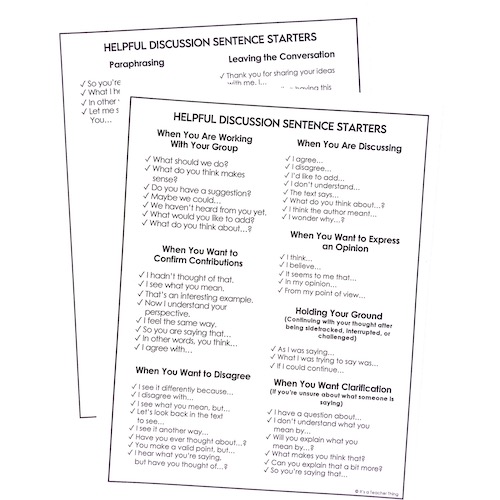
Getting started with literature circles includes many factors, but one of the first things to consider is determining how much time you have to devote to this valuable addition to your reading program.
Key factors you want to consider when scheduling literature circles
1. Consider Student Engagement When Getting Started with Literature Circles
Literature circles can run as long as you’d like them to run, but here’s something to consider: students can grow bored with the same book after weeks and weeks. As a classroom teachers who has used literature circles for years, I find the ideal length of time is between 2-4 weeks. 3 weeks is about perfect because we have enough time to review all the skills needed to successfully participate in a literature circle group and to grow more comfortable with the roles and procedures, but there’s not enough time to grow bored.
2. Think About School Schedules
It’s important that students have consistent time to do all that’s required for successful literature circles. The fewer interruptions, the better. We know we can’t control everything that happens on our campuses, but you can get some idea of upcoming events, rallies, fire drills, minimum days, vacations, field trips, etc.
When there are disruptions, the literature circle experience becomes fragmented. This is especially challenging for struggling readers. Be aware of time constraints and schedule accordingly.
3. Selecting the Right Time of Year Matters When Starting Literature Circles
I generally like to wait at least 6 weeks into a new school year before running my first round of literature circles. This gives me enough time to gain some understanding of reading levels and interests. It’s also a good time because we generally have few interruptions in the month of October. Which months on your campus have more consistent in-class days? These are good months to choose.
My favorite time of year to run literature circles is before a break or upon returning from a break. Students love returning to something new in the classroom. Before they leave for break, you can build excitement by previewing books, talking about groups, learning how to agree and disagree, etc. You have instant buy-in when returning from a break because literature circles are unique and there’s a lot of student interaction.
If you’re running literature circles before a break, students are engaged right up to that last day, which is a big win in my book!
4. Learning How to Participate in Literature Circles Takes Time
I like to allow at least a week to a week and a half for teaching about how literature circles work, modeling the jobs, speaking and listening skills, and other foundational skills students will acquire and use. I promise you that your literature circles will run more smoothly when you take the time to model what to do and how to do it. Make sure to schedule in this time. Find out more about the skills you’ll want to teach in the literature circles unit I use. The Discussion Sentence Starters (pictured below) are included.
5. The First Round of Literature Circles Takes the Longest (generally)
When students are just learning skills, things take more time. The more they gain experience with literature circles, the faster things will run. Be prepared, and allow for extra time the first few rounds you run literature circles.
6. Refine Literature Circles As You Gain More Experience
The more you run literature circles, the more ownership students can take. However, the skills they’ll use need to be taught. For this reason, the more structure you have early on, the better.
Later, you can work on refining literature circles and see what works in your classroom. You may find yourself changing things up as you go, depending on student needs, and that’s perfect. Provide that structure early on and then you can allow for more spontaneous experiences. I’ve created a literature circle unit that has everything you’ll need, including 10-pages of teacher tips.

My hope is that you can envision what needs to be considered when planning out a timeframe for your literature circles. If you haven’t yet read my blog post about 5 reasons to use literature circles in your classroom, you’ll find tons of great information to help you get started.
Pin this blog post for future reference.




Leave a Reply